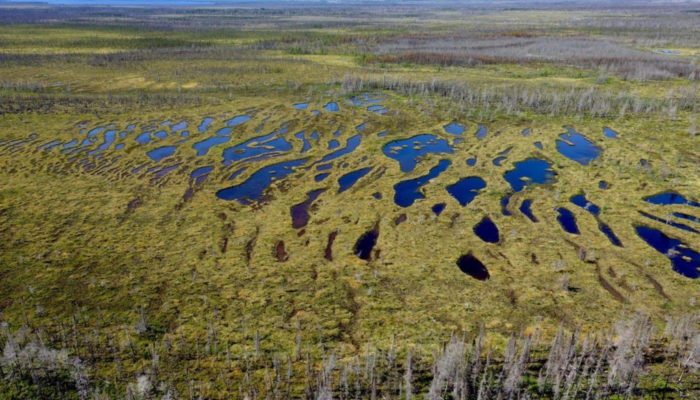
2020 is being described by many as a tipping point: the year that humanity as a species must take concrete and measurable action to prevent catastrophic climate change. But even if we do manage to slow carbon emissions from 2020 onwards, how would the planet deal with all the carbon dioxide we have produced so far? How much capacity do the planet’s natural carbon sequestration reserves actually have?
This is a question that many scientists have been asking. In a paper published last week in Biogeosciences, a team of researchers spanning the northern hemisphere posed this question about a specific source of natural sequestration – peatlands.
Peatlands are a special type of wetland where decomposed plants build up to form a unique soil called peat. These environments are important sources of carbon capture and storage and have acted as persistent, natural carbon sinks ever since the last Glacial Maximum, which ended approximately 20,000 years ago. In the high latitudes above 45°N, peatlands cover between 2.4 and 4 million km2. During the next 20,000 years, it has been suggested that these peatlands could absorb carbon at the same level as we have produced it — if the peatlands are growing.
This is because when peatlands are in equilibrium, they are still very important sources of carbon storage, but their ability to absorb carbon is relatively low. When, however, peatlands are naturally growing (either in area or depth), they are able to lock in much more carbon. But how much more is a question that scientists have been debating for more than 30 years.
In this Biogeosciences paper, a team led by Dr Georgii Alexandrov tried to calculate the potential for increases in depth (and therefore carbon storage) in the northern peatlands using an updated Earth System Science approach. They adapted an existing method of calculating the estimated average potential peat depth that uses gridded data of soil properties and estimated depths to bedrock. The researchers also accounted for the uncertainty that comes from natural variation by comparing their results with data collected from direct observations.
The researchers calculated that with peatland growth at a rate similar to today’s, approximately 330±200 PgC (PgC is petagrams of carbon, where one petagram is equivalent to 1015 grams, or a billion metric tons) could be removed from the atmosphere during the current interglacial period.

The estimates of potential carbon stocks (or capacity) in northern latitudes per area of a grid (109g C per km-2) in a) Europe b) western Siberia and c) Canada.
The authors wrote:
“if cumulative carbon emissions do not exceed 1000 PgC, the northern peatlands could play an important role in global carbon cycle recovery.”
Although it remains true that the majority of carbon dioxide emissions are predicted to be absorbed by the oceans over the next few centuries, the findings of this study show that as long as we keep anthropogenic carbon emissions in check, when it comes to the long-term global recovery of the planet, peat’s got us covered.
Reference: Alexandrov, G., et al. The capacity of northern peatlands for long-term carbon sequestration, Biogeosciences 17, 1, 47-54, 2020



